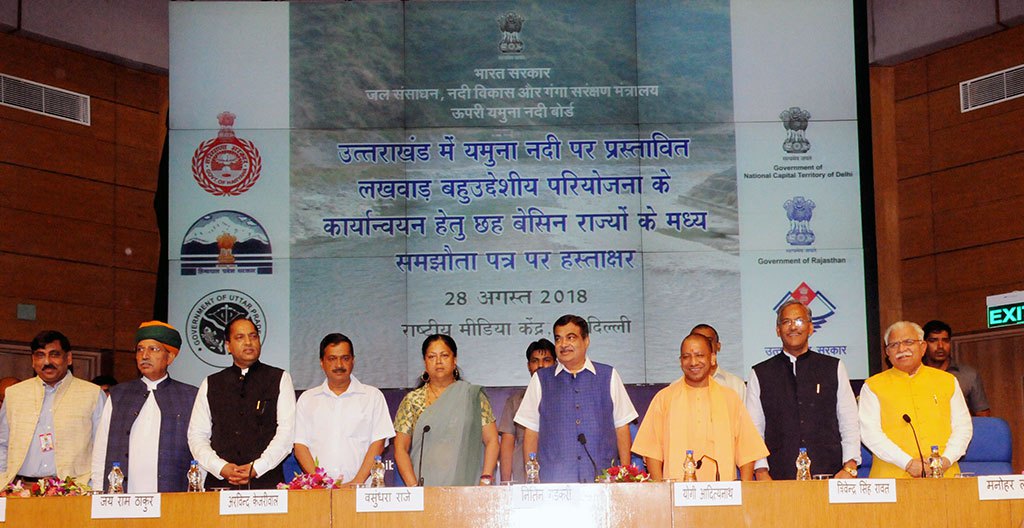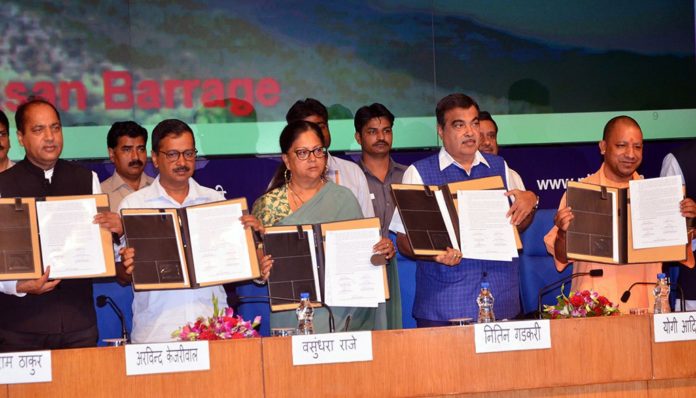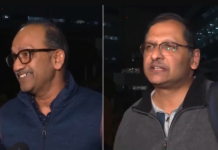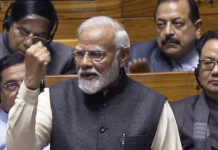To deal the water crisis, Union Minister Nitin Gadkari signed MoU in Delhi with six Indian states. Four decades old Lakhwar Multipurpose National Project for water finally got approved today. the Chief Ministers of Uttarakhand (Trivendra Rawat), UP (Yogi Adityanath), Rajasthan (Vasundhara Raje), Himachal Pradesh (Jairam Thakur), Haryana (Manohar Lal) and Delhi (Arvind Kejriwal). For this grand project, Rajasthan CM Smt. Vasundhara Raje thanked Union Minister Nitin Gadkari and posted a tweet. Know more.
CM Raje congratulated Union Minister Gadkari. She expressed her delight on signing this MoU as this project was pending from last 42 years. Now, with the help of this project, Rajasthan would get water for the whole year.

Details of the project
This project was conceived in 1976 and finalized in year 1992 finally inked today. With this Rs. 3966 crore Lakhwar Multipurpose Project, the water of Yamuna river will be provided to six states. Under this project, a 204 meter high dam will be built. This project will generate three hundred MW of power. Here, the expenditure on electricity ₹ 1388.28 crore will be borne by Uttarakhand government. Hence, it will get full power on electricity. On drinking water and irrigation water, ₹ 2578.23 crore will be spent. Out of this, central government will bear 90% expenditure and state government will take rest 10%.The water will be divided between six states.
History of the project
This project faced several issues in implementation. In 1976, Lakhwar project was approved by the Planning Commission. Then, in 1986, after getting environmental clearance, the JP Group started construction of a 204 meter high dam. Later, in 1992, JP Group got separated from the project due to non-receipt of the money.
Later in 2008, the central government declared it a national project, under which the central government would spend 90 percent of the money and the remaining 10 percent would be ruled by the state.












